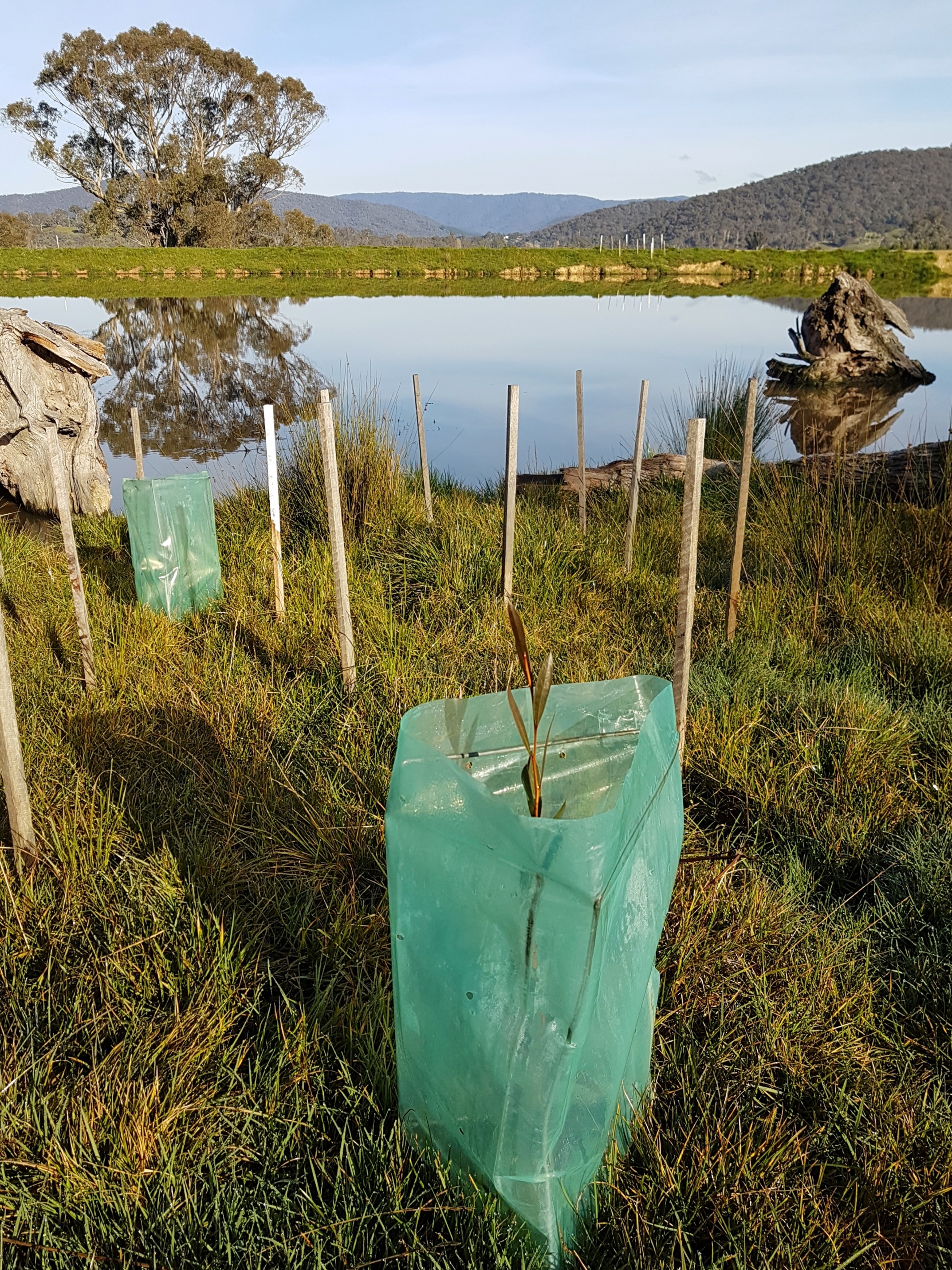
Webinar: Planning & planting to maximise the potential of farm dams
Webinar recording: Hear about the latest research on the biodiversity and productivity benefits of enhancing farm dams, what to plant where and other practical tips for planning a farm dam enhancement project.
In this webinar, held on 14 October 2021, our speakers discuss the following:
- Sustainable Farms ecologist Dave Smith shared current research on enhancing farm dams.
- Angelina Siegrist, Sustainable Farms ecologist, introduced our new guide, Enhancing farm dams: What to plant in and around your dam, including explaining the different zones of a dam and species selection.
- Sally Day, Greta Valley Landcare project officer, shared her experiences of why farmers choose to enhance their dams and practical aspects of planning a farm dam project.
Q&A – Answers to some of the questions asked by webinar participants
We received dozens of questions during this webinar, and there wasn’t time to answer them all live. So we have compiled answers for some of the most-asked questions that were not covered in the webinar.
Q: Where can I get plants for revegetating in and around my dam?
A: There are many local nurseries specialising in native species for revegetation projects – ask your local Landcare facilitator, Catchment Management Authority or Local Land Services for recommendations. You may need to ring around to find out which nurseries specifically sell wetland species. If your local nursery does not stock the plants you require, they will be able to order the plants via wholesalers such as those on this list of plant suppliers.
Q: If you don’t have livestock on your property, are there still any advantages to enhancing a dam?
A: Yes, absolutely! In this situation we suggest focusing your efforts on the other steps of enhancing a dam to add both terrestrial and aquatic wildlife habitat. These include revegetation and adding fallen timber or floating islands. (If there is the likelihood of land transferring hands in the near future, fencing might be worthwhile to encourage the maintenance stock exclusion under a different management regime.) Consider what structural layers in your vegetation need work and focus your efforts there. It is also worth considering that sometimes exclusion fencing might be necessary to part of the dam to establish revegetation, while leaving an access point to water for native fauna to drink.
Q: How close to a dam is it okay to plant trees?
A: Trees provide important habitat for wildlife around dams and also have a role in providing shade and reducing wind speeds across the water, thereby reducing evaporation. However, it is important to avoid planting trees within 15m of the dam wall as the deep roots can damage the structural integrity of the wall. Also avoid planting trees in the inflow area. Around the rest of the dam, we recommend planting trees at least 5m from the high-water line, as excessive shade can limit the growth of the groundcovers that are essential for stabilising the soil around the margins of a dam.
Q: What should I plant in the inlet area of my dam, which is spring-fed?
A: Plants in the inflow zone of a dam have a very important role in filtering sediment and absorbing nutrients from paddock run-off, helping keep dam water clean and reducing algal blooms. Having a dense ground cover is ideal, therefore this area should be planted with groundcover species such as grasses, forbs and rushes that can handle boggy areas and seasonally wet conditions. It is also a good idea to include some dry-loving species for when some of the wetland species may be dormant, to ensure good coverage throughout the year.
Q: How do frogs find a nice suitable dam when they haven’t been there before?
A: Frogs lay sticky eggs in amongst aquatic vegetation, so the eggs can often be transferred between waterbodies by unsuspecting water birds moving between sites. Frogs are also surprisingly good at moving around landscapes as adults, and tadpoles and eggs can be washed downstream with even the slightest flows.
Q: What are the pros and cons of having a lot of Azolla in a dam?
A: Pros: Azolla is a native species that can help shade and cool your dam water.
Cons: Too much of it can de-oxygenate the water, making it difficult for other aquatic life to persist.
Azolla responds to high levels of nutrients so trying to strengthen vegetation cover in your inflow area to limit the amount of nutrients is a good place to start. If it does get out of control you can manually remove it, using a pool net or rope. It makes good garden compost too so you can add it to your veggie patch. However it will naturally cycle in abundance, so if left alone it will reduce in coverage across the waterbody.
Q: Where can you source the browsing deterrent product to protect plants from wildlife damage?
A: This product has been developed and trialled in Victoria and Tasmania by Agriculture Victoria and can help protect plants against rabbits, kangaroos and other browsers. It is available here.
This product was developed to protect new and existing plants against kangaroos, wallabies, rabbits, possums and other browsing animals. The easiest way to use this is to apply it to whole trays of tubestock prior to planting, as it is time consuming to treat individual plants. It is most effective if the browsing animal tastes it the first time they try to browse the new plants, as then they will not return. Once they develop a habitat for nibbling it is harder to break. It is important to note that as the plant grows you may need to reapply the deterrent product to the emerging new growth.
Related resources
Download the farm dam planting guide
List of wholesale native plant suppliers

